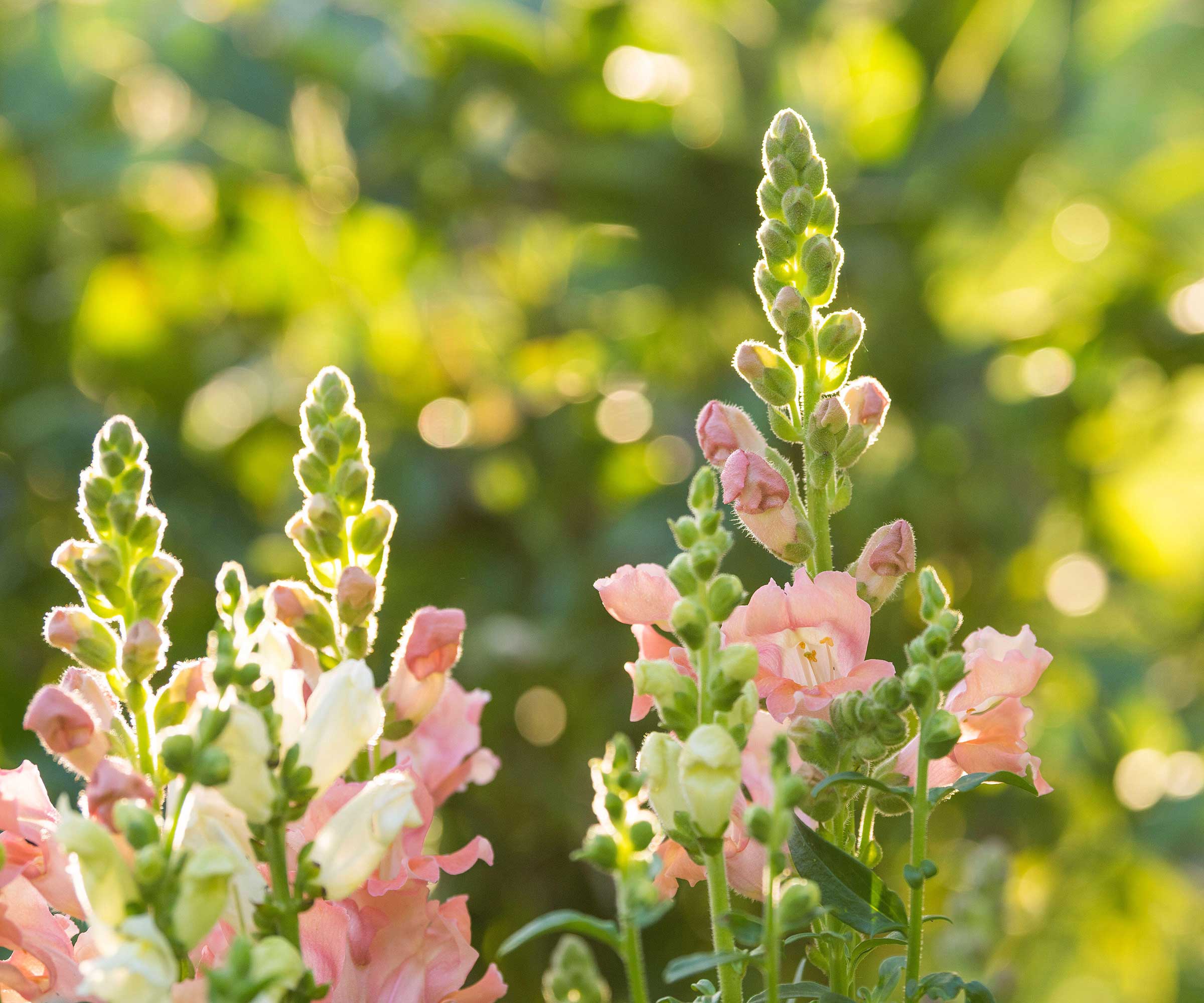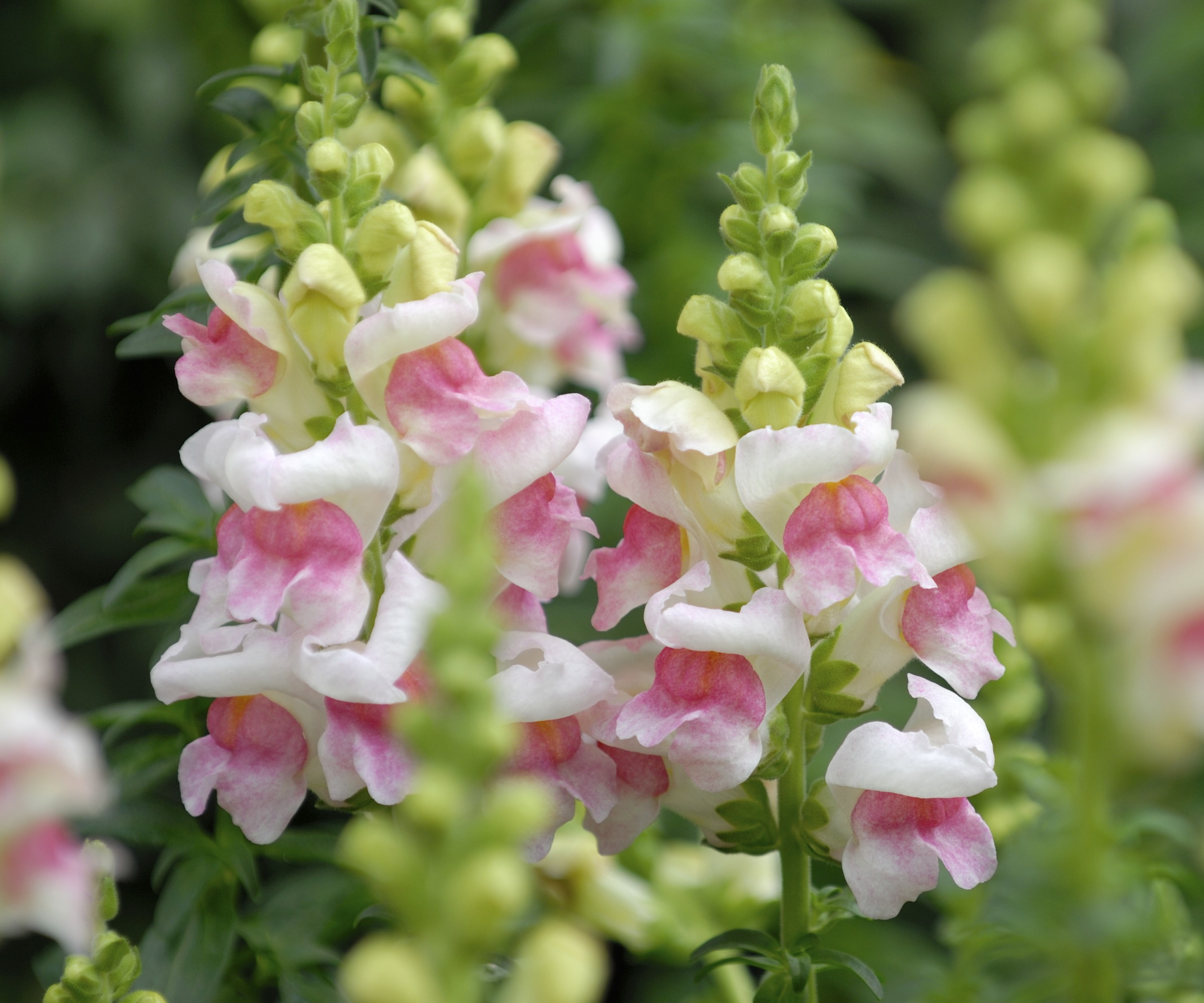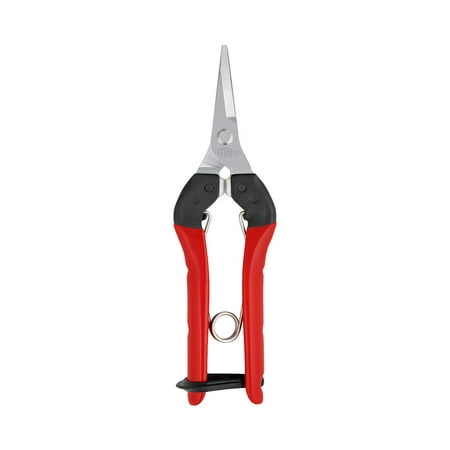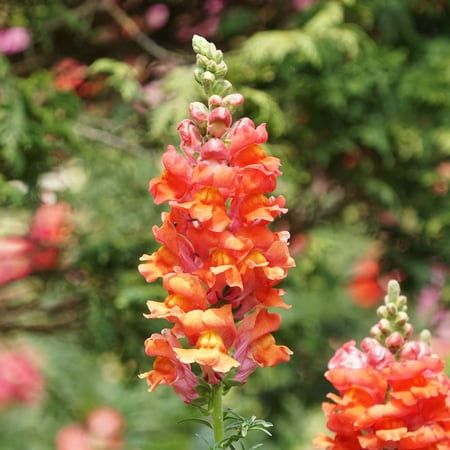Is it necessary to deadhead snapdragons? A flower expert reveals the secrets to snapdragon success
Deadheading spent flowers will keep your plot looking good and extend the floral show


Vibrant snapdragons more than earn their place in any cutting garden. During summer, upright stems each produce tens of blooms that are dragon-like in appearance, and are found in a variety of vivid, bold colors.
If you are keen to keep snapdragons flowering for as long as possible this summer, one vital task to remember is deadheading. Most common garden snapdragon varieties belong to the Antirrhinum majus species and are native to the Mediterranean region.
Last summer, when working as a gardener in Italy, I grew several snapdragon varieties, but one of my favorites was a peach variety, Antirrhinum majus 'Costa Apricot'. If you are looking for cut-and-come-again flowers, this unusual, romantic salmon-peach variety comes highly recommended, provided you know how to deadhead them correctly. Here, one gardening expert shares all the information you need to know about removing faded flowers to prolong the flower show in your yard.

How to successfully deadhead snapdragons
When considering how to grow snapdragons, these reliable blooms should be treated as flowering annuals in cooler regions, such as US hardiness zone 5, or as short-lived perennials in warmer regions, such as US hardiness zone 9 and above. Wherever you reside and however you grow snapdragons, it is important to remember that deadheading can extend flowering by a significant margin.
When to deadhead snapdragons

Snapdragon plants can flower from spring until fall, potentially starting in April and May and blooming through until September and October. This will be determined by when you sowed seeds or planted your snapdragons, and the local climate in your US hardiness zone.
'Deadheading is an essential job during the spring and summer,' says Rachel Bull, head of gardens at Homes & Gardens. 'As soon as your first blooms begin to fade and the petals start to fall, deadheading can commence and will continue as an important job on your summer gardening checklist.'
As Rachel says, deadheading is a continuous job. My approach to deadheading is little and often, spending five minutes or so each evening when the temperatures drop, removing faded blooms from different annuals in the cutting patch, including snapdragons, cosmos and dahlias.
Design expertise in your inbox – from inspiring decorating ideas and beautiful celebrity homes to practical gardening advice and shopping round-ups.

Rachel is a gardening editor, flower grower and floral designer. Her journalism career began on Country Living magazine, sparking a love of container gardening and wild planting. After more than a decade writing for and editing a range of consumer, business and special interest titles, Rachel became editor of floral art magazine The Flower Arranger. She then trained and worked as a floral designer and stylist in London for six years, before joining the Homes & Gardens team.
How to deadhead snapdragons

As soon as your first flush of snapdragons fades, deadheading can begin. 'The tell-tale sign will be withering, browning and dropping petals,' Rachel adds. 'Removing them will improve the look of your plants and encourage additional flower stems.'
The only tools you will need are clean, sharp pruning snips, available from Walmart, and a garden bucket or green waste bag, also available from Amazon.
'Much like deadheading dianthus or deadheading lilies, it is important to remove faded flower stems quickly to prevent the plant from using energy on seed production,' Rachel says. 'By removing these old stems, new blooms will soon emerge, prolonging the snapdragon show for as long as possible - and who doesn't want more flowers?'
One of the most common deadheading mistakes is snipping the flower stem in the wrong place. 'It is important to cut down to a leaf node, or remove the stems entirely,' Rachel adds, 'snipping right down to the base.' Indeed, encouraging basal shoots will ensure that your snapdragons remain bushy, healthy and full of blooms.
'Be careful not to damage other flower stems,' Rachel continues, 'as you want to protect any unopened blooms and buds.'
Regular deadheading will ensure that your plants flower late into the season. I have known some plants to keep producing flowers into October and even November during mild years, so be sure to keep on top of your deadheading chores in the yard.
FAQs
Can I compost the flowers and stems that I remove?
Yes, any snapdragon stems or flowers that you remove from pots and borders can be added to your compost heap. Just be sure to snip any stems so they are no bigger than a few inches in length, which will help speed up the composting process.
So there you have it, spending a short amount of time deadheading faded flowers will help to extend the snapdragon show in your yard, encouraging your plants to continue producing flowers late into the season. For more flower inspiration, see our cottage garden plants guide, with information on some of the best flowering perennials and annuals to grow this year.

Thomas is a Content Editor within the Gardens Team at Homes and Gardens. He has worked as a professional gardener for both public spaces and private estates, specializing in productive gardening, growing food and flowers. Trained in Horticulture at the Garden Museum, he has written on gardening and garden history for various publications, including The English Garden, Gardens Illustrated, Hortus, The London Gardener and Bloom. He has co-authored a Lonely Planet travel book, The Tree Atlas, due out in 2024.

